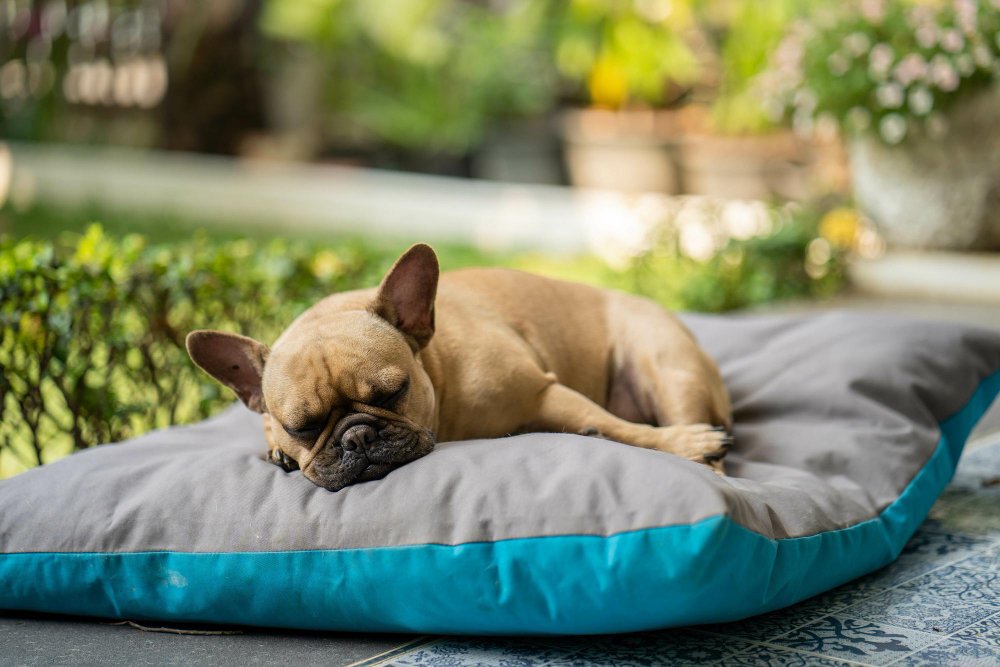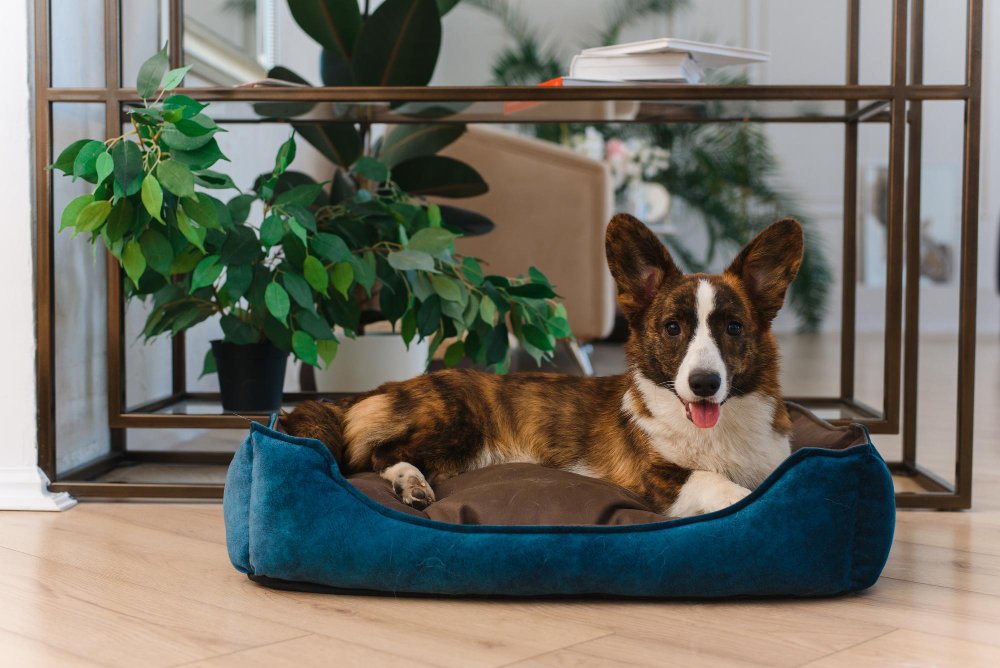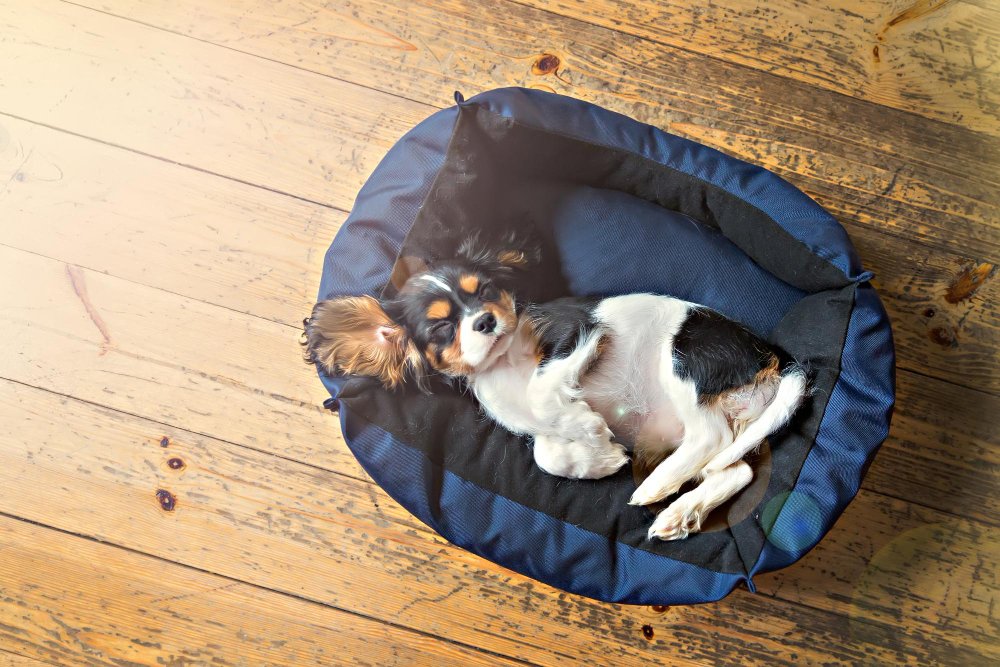Creating a Calming Environment for Your Pets
Creating a calming environment for your pets at home is essential for their well-being. It can help reduce stress and anxiety in pets, making them feel safe and comfortable. In this article, we will explore the importance of a calming environment, how to design a calming space for your pets, implementing calming techniques, and establishing a routine to promote calmness. Here are the key takeaways:
Key Takeaways
- Understanding the importance of a calming environment for your pets is crucial for their well-being.
- Designing a calming space involves choosing the right location, creating a cozy bedding area, and incorporating natural elements.
- Implementing calming techniques such as aromatherapy, soothing music, and calming toys can help create a relaxing atmosphere for your pets.
- Establishing a routine that includes a consistent feeding schedule, daily exercise and playtime, and relaxation techniques can promote calmness in your pets.
- Creating a safe and comfortable environment for your pets during the holidays can help reduce anxiety and stress.
Understanding the Importance of creating a Calming Environment for Your Pets
The Impact of a Calming Environment on Your Pet’s Well-being
Creating a calming environment for your pet is crucial for their overall well-being. Pets, just like humans, can experience anxiety and stress, which can have negative effects on their health. By providing a calming space for your pet, you can help reduce their anxiety and promote a sense of security and calmness.
One important aspect of creating a calming environment is to design a specific area for your pet. This area should be a safe haven where they can retreat to when they feel overwhelmed. It can be a quiet corner of your home with a comfy bed or crate that they can associate with feelings of security and relaxation.
In addition to a designated space, it’s important to keep your pet busy and mentally stimulated. Boredom can contribute to anxiety-like behaviors, so providing toys, puzzles, and interactive activities can help keep your pet engaged and entertained.
Recognizing triggers that cause anxiety in your pet is also essential. Whether it’s separation anxiety, noise phobias, or changes in their environment, understanding these triggers can help you address them effectively. By creating a safe and secure space for your pet and engaging them in regular exercise, you can help alleviate their anxiety and promote a sense of calmness.
Remember, for severe cases of anxiety, it’s always advisable to consult your vet. They can provide guidance tailored to your pet’s specific needs and recommend appropriate anxiety medication if necessary.
How a Calming Environment Can Reduce Stress and Anxiety in Pets
Creating a calming environment for your pets at home can have a significant impact on their well-being. By providing a space that is designed to promote relaxation and reduce stress, you can help your pets feel more comfortable and secure. This is especially important for pets that struggle with anxiety-like behaviors. Distraction with toys and treats can be a helpful way to divert their attention from anxiety triggers. Engage your pets with toys or puzzles to keep their minds off the stress. For cats, catnip or interactive toys can be particularly effective. Dogs might enjoy puzzle feeders that challenge and reward them. Remember, for severe cases of anxiety, a conversation with your vet is always advisable. They can offer guidance tailored to your pet’s specific needs and if they need any dog anxiety medication.
Designing a Calming Space for Your Pets
Choosing the Right Location for Your Pet’s Calming Space
Consider using a large closet or sectioning off an area of your kitchen or den for your pet to safely explore and find comfort throughout the day. The most important thing is that you design a space with your pet in mind. It should have all of its essentials, including food, toys, water, and a comfortable bed. You can even go all out with pet-themed decor. However you decide to design this specific area, know that you’re providing a calming environment for your pet. That alone can make them less likely to destroy things.
Creating a Cozy and Comfortable Bedding Area
Making your pet’s bedding area as comfortable as possible is essential to ensure they have a cozy place to rest and feel at ease. Consider adding a comfy dog bed and blankets to provide a soft and warm spot for them to curl up. If you have the space, you can even include pup-sized couches or human-style beds, which can be an adorable addition to their space. For senior dogs or pets with mobility issues, a dog ramp can be beneficial in helping them easily access furniture. Additionally, adding plush and grippy rugs to wood floors can help prevent accidents and protect their joints. This not only adds comfort but also adds a touch of style to the room. Remember, creating a comfortable bedding area is crucial in promoting relaxation and a sense of security for your beloved pet.

Incorporating Natural Elements in Your Pet’s Environment
When designing this specific area, you are providing a calming environment for your pet. That alone can make them less likely to destroy things, especially if they tend to struggle with anxiety-like behaviors. You’ll also feel better knowing that even if they are anxious when they’re by themselves, they won’t be able to run around the entire house destroying things while you’re gone.
To keep your pet busy and entertained, consider implementing the following ideas:
- Create a scent garden by spritzing diluted and dog-friendly smells on various surfaces and letting them explore.
- Incorporate natural sounds, such as playing recordings of different birds or animals they don’t usually hear.
- Decorate the area with non-toxic, pet-friendly plants like spider plants and Boston ferns.

Remember, environmental enrichment is important for your pet’s well-being and can help alleviate boredom and stress. By incorporating natural elements in their environment, you are providing them with a soothing and stimulating space to thrive in.
Implementing Calming Techniques for Your Pets
Using Aromatherapy to Create a Relaxing Atmosphere
Aromatherapy is a wonderful way to enhance the calming environment for your pets. By using pet-safe essential oils, you can create a soothing atmosphere that promotes relaxation and reduces stress. Whisker Wellbeing is an important aspect of your pet’s overall comfort, and aromatherapy can play a significant role in achieving that. Here are some tips to get started:
- Choose essential oils that are safe for pets, such as lavender, chamomile, or frankincense.
- Dilute the essential oils with a carrier oil, like coconut or jojoba oil, before using them.
- Use a diffuser to disperse the scent throughout the room.
Remember, it’s essential to consult with your veterinarian before using any essential oils on your pets, as some oils can be toxic to certain animals. With the right precautions, aromatherapy can be a powerful tool in creating a calming environment for your beloved pets.
Playing Soothing Music to Calm Your Pets
When it comes to creating a calming environment for your pets, playing soothing music can be a great way to help them relax. Soothing music has been shown to have a positive effect on pets, helping to reduce stress and anxiety. It can create a peaceful atmosphere and provide a sense of comfort for your furry friends.
To make the most of this technique, it’s important to choose the right type of content to play for your pet. Soothing music or talk radio stations are generally better options than loud, action-packed TV shows or movies. Additionally, ensure that the volume is set to a moderate level to avoid causing stress or overstimulation.
It’s important to remember that every pet is unique, and their needs may vary. Some pets might not benefit from the radio or TV being left on and may require alternative methods to cope with being alone. As a pet owner, it is crucial to observe your pet’s behavior and preferences to determine the most effective solution for reducing stress and anxiety.
If you’re looking for other ways to create a calming environment for your pets, consider using a pet food dispenser to provide them with regular meals and snacks. This can help establish a routine and provide mental stimulation for your pet. Additionally, incorporating natural elements such as plants or natural scents can also contribute to a calming environment.
Remember, creating a calming space for your pets is essential for their well-being. By implementing these techniques, you can help your pets feel more relaxed and at ease in their home environment.
Utilizing Calming Toys and Puzzles for Mental Stimulation
Toys and activities expose your puppy to a variety of sights, smells, sounds, and textures that help their brains develop. Problem-solving skills they practice while young will help them grow into a resilient adult dog. The key to puppy enrichment is keeping everything positive and not letting them get too frustrated when solving puzzles. Start easy and slowly work your way up to harder and harder puzzle toys. Enrichment Helps Reduce Anxiety and Stress: Shelter dogs are often given environmental enrichment to reduce stress. A recent study found that “the use of environmental enrichment methods which can create a soothing environment in your home. Distraction with toys and treatsEngage your pets with toys or puzzles to keep their minds off the stress. For cats, catnip or interactive toys can be particularly effective. Dogs might enjoy puzzle feeders that challenge and reward them. These distractions can be a helpful way to divert their attention from anxiety triggers. Consult your vetRemember, for severe cases of anxiety, a conversation with your vet is always advisable. They can offer guidance tailored to your pet’s specific needs and if they need any dog anxiety medication.
Establishing a Routine to Promote Calmness in Your Pets
Creating a Consistent Feeding Schedule
Maintaining a consistent feeding schedule is crucial for your pet’s well-being. By sticking to a regular routine, you provide a sense of stability and predictability that can help reduce stress and anxiety. Variety is also important to keep things interesting and enticing. Remember – it isn’t enrichment if it happens every day. Consider using puzzle bowls or interactive toys to feed your dog, as this not only slows down their eating but also engages their problem-solving skills. For cats, try using puzzle feeders or snuffle mats to make mealtime more stimulating. These small changes can make a big difference in your pet’s overall happiness and mental stimulation.
Setting Aside Time for Daily Exercise and Play
Daily exercise and playtime are essential for keeping your pet healthy and happy. Regular physical activity helps to burn off excess energy and promote good physical health. It also provides mental stimulation and helps to prevent boredom and destructive behavior. Make sure to engage in activities that your pet enjoys, such as playing fetch or going for a walk. Additionally, consider enrichment activities that challenge your pet’s mind, such as puzzle toys or training sessions. These activities can help to tire out your pet both physically and mentally, leading to a calmer and more contented pet.
Practicing Relaxation Techniques with Your Pets
If your pet does get agitated, there are some treatments you can try to help them relax. Some typical at-home pet anxiety remedies you can try with your furry friend include:
- Calming techniques like music and white noise
- Anti-anxiety treats
- Calming collars or vests
- Quiet, safe spaces
- Veterinary-approved supplements and prescription medication
Remember, for severe cases of anxiety, a conversation with your vet is always advisable. They can offer guidance tailored to your pet’s specific needs and if they need any dog anxiety medication.
Establishing a Routine to Promote Calmness in Your Pets
Conclusion
Creating a calming environment for your pets at home is essential for their well-being and can help reduce anxiety and destructive behaviors. By providing safe spaces, incorporating calming products, and keeping them stimulated, you can create a sanctuary for your furry friends. Remember to stay calm and positive around them, introduce new routines gradually, and consult your vet for severe cases of anxiety. With these simple tips, you and your pets can enjoy a peaceful and harmonious home environment.
Frequently Asked Questions
Why is a calming environment important for pets?
A calming environment is important for pets because it helps reduce stress and anxiety, promotes their overall well-being, and can prevent destructive behaviors.
How can a calming environment reduce stress and anxiety in pets?
A calming environment can reduce stress and anxiety in pets by providing a safe and comfortable space, incorporating soothing elements such as aromatherapy and soothing music, and establishing a consistent routine.
What are some tips for choosing the right location for a pet’s calming space?
When choosing the right location for a pet’s calming space, consider a quiet and secluded area away from high-traffic areas and noise. It should be a place where the pet feels safe and can retreat to when needed.
How can natural elements be incorporated into a pet’s environment for a calming effect?
Natural elements such as plants, natural lighting, and natural materials can be incorporated into a pet’s environment to create a calming effect. These elements can help reduce stress and create a soothing atmosphere.
What are some recommended calming techniques for pets?
Some recommended calming techniques for pets include using aromatherapy with calming scents, playing soothing music, and providing calming toys and puzzles for mental stimulation.
How can a routine promote calmness in pets?
A routine can promote calmness in pets by providing structure and predictability. This helps pets feel secure and reduces anxiety. A consistent feeding schedule, daily exercise and playtime, and practicing relaxation techniques can all contribute to a calm environment.







